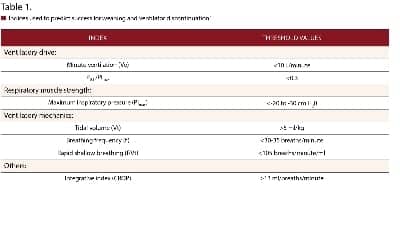Respiratory therapists top the list of most in demand temporary allied healthcare professionals, according to a new survey of over 150 healthcare facilities by AMN Healthcare.
The survey of 159 hospitals, as well as other healthcare facilities, indicates that 96% have used allied healthcare professionals of various types to fill temporary assignments during the last 12 months. Respiratory therapists are most commonly used, followed by laboratory technologists, radiologic technologists, physical therapists, occupational therapists, and speech pathologists.
“The widespread use of temporary allied healthcare professionals signals an emerging shortage of these workers,” said Robin Johnson, Divisional President with AMN Healthcare. “The same pattern of labor shortages prevalent in nursing and medicine now are affecting the allied healthcare professions.”
Number One In Demand Employment Sector
Over 22 million people now are employed in healthcare and social services, the nation’s largest employment sector, the U.S. Census Bureau reports. Of these, about 60% can be characterized as allied healthcare professionals, who work in over 80 different job categories, according to the Association of Schools of Allied Health Professions (ASAHP).
The survey indicates that 75% of hospitals and other healthcare facilities currently are seeking temporary allied healthcare professionals. The primary reason, cited by 73% of facilities surveyed, is to fill gaps while permanent workers are being sought, suggesting that allied healthcare professionals are difficult to find in today’s volatile labor market.
Preventing Worker Burnout
The primary benefit of using temporary allied healthcare professionals, cited by 71% of facilities surveyed, is to prevent the burnout of existing staff. Due to COVID-19 and other factors, burnout and turnover among healthcare workers has escalated in recent months. According the U.S. Bureau of Labor Statistics (BLS), 589,000 healthcare workers quit their jobs in September, 2021, representing a 35% voluntary attrition rate, a new record. The survey indicates that many healthcare facilities are using temporary allied healthcare professionals to alleviate the burden on their permanent staff and thereby reduce turnover.
Role in Treating COVID-19
Most facilities surveyed (53%) said that temporary allied healthcare professionals have been either moderately or extremely involved in treating COVID-19 patients. Some allied healthcare professionals, such as respiratory therapists and laboratory technologists, are key parts of COVID-19 treatment teams. The high demand for radiologic technologists, who operate X-ray, MRI, and other imaging equipment, suggests that patient utilization of medical procedures and other services is rising after being temporarily depressed by the pandemic. Shortages of professionals could lead to delays in necessary services as demand rises, Johnson said.
“Without the presence of laboratory technologists, imaging technologists, and other allied professionals, the tests and data required to conduct medical procedures and treatments backlogs, and the entire process can slow to a halt,” Johnson said.
Widespread Acceptance
The survey indicates that temporary allied healthcare professionals are widely accepted when on assignment. Eighty-three percent of facilities surveyed indicated that temporary allied healthcare professionals are accepted by their co-workers, 94% are accepted by their managers, and 82% are accepted by patients. The great majority of those surveyed (97%) rated the skill level of temporary allied healthcare professionals average, good, or excellent.
The full survey results are available at the AMN Healthcare website.









